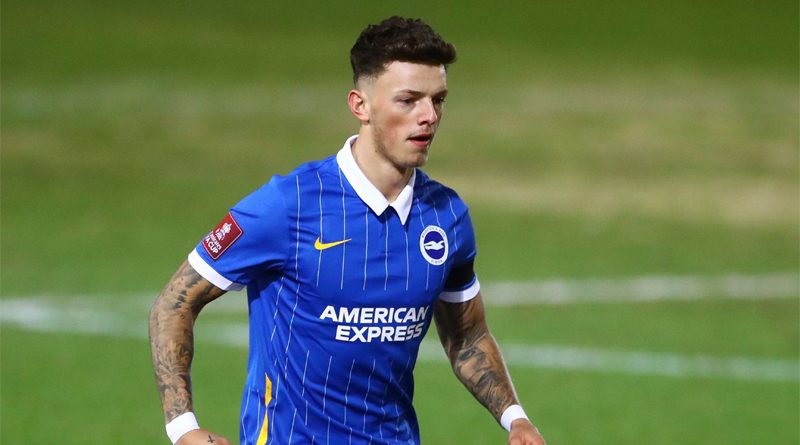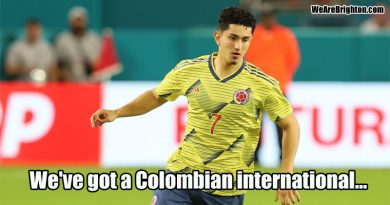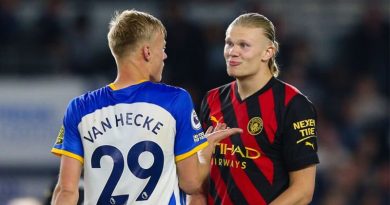Should Brighton sell some family silver this summer to buy a new striker?
Brighton need to buy a clinical striker. The whole of football world knows it, from Albion fans who have watched countless easy opportunities squandered over the course of the 2020-21 campaign to the casual observer who tunes in to two games a season to those who pour over xG stats like they are a copy of Mayfair magazine.
The 455 shots Brighton have managed in the top flight so far this season is a total bettered by only Manchester City, Manchester United, Liverpool, The Leeds United and Chelsea.
Just 26 of those efforts have resulted in Albion goals. That gives a conversion rate of 5.7 percent, the third lowest in the Premier League. Only Fulham and Sheffield United are less clinical according to Transfermarkt.
Brighton’s last two home games have been a case in point. 46 shots have rained down upon the goals of Aston Villa and Crystal Palace in the past 180 minutes of football played at the Amex. The final score in those matches? Brighton 0-0 Aston Villa and Brighton 1-2 Crystal Palace.
Whilst you have to give Emiliano Martinez in the Villa goal credit for his world class performance, it says much that the Albion have failed to score more against Villa, Southampton, Fulham and Burnley at home.
They only managed to notch once against West Bromwich Albion and Sheffield United. Even the worst teams in the division this season come to the Amex and know that there is a strong chance of keeping a clean sheet.
There are two problems with the whole Brighton need to buy a clinical striker thing. The first is that every other club in the Premier League are looking for that exact same player, including West Ham United who seem to have spent the past seven seasons signing centre forwards without any success.
Proven top flight goal scorers are rarely available. Southampton picked up Danny Ings when he was surplus to requirements at Liverpool and Newcastle swooped on Callum Wilson when Plucky Little Bournemouth were relegated, but those two aside it is rare that a clinical striker swaps one Premier League team for another.
Instead, clubs like Brighton find themselves taking risks on players from the Championship or abroad. Players like Neal Maupay, who is not the donkey that a lot of Albion supporters are bizarrely making him out to be – although his conversion rate could improve massively.
As for shopping in foreign lands, Jurgen Locadia and Alireza Jahanbakhsh have contributed five Premier League goals between them for a combined outlay of £32 million. Ouch.
The other problem is money. Strikers do not come cheap. Combine that with Brighton having announced a £67 million loss for the 2019-20 season and you can understand why Tony Bloom is reluctant to open his cheque book and buy a £30 million striker with whom comes an element of risk.
Would spending big become an option if the money was not coming from Bloom’s vast personal fortune? It was interesting to hear Paul Barber talking at the recent Brighton Fans’ Forum about player sales or to be more precise, the lack of player sales made by Brighton over the past five years.
That £67 million loss is so eyewatering because the Albion have hardly brought in any income through selling assets. Had Ben White been flogged to The Leeds United in the summer for £30 million for example, nearly half of those losses are wiped out overnight.
One Brighton fan asked Barber if Brighton were looking to become the new Southampton. The Saints model of business has been signing young players, developing them and then flogging them for vast profit, more often than not to Liverpool. Those profits then get reinvested in more new arrivals and the cycle starts all over again.
Barber did not outright say “We want to be Southampton”, but he might as well have done. He talked about the possibility of selling one player a summer for a massive fee having already identified and signed the heir to their position.
We can see that happening in numerous places across the pitch. Should White make a move to one of the big six this summer, Matt Clarke and Leo Ostigard can return from their respective loan spells in the Championship with Wayne Rooney’s Derby County and Coventry City to take his place.
When Tariq Lamptey’s time to move on comes, Michal Karbownik is a ready-made, long-term replacement. That Joel Veltman chap is not bad at right wing back, either.
Yves Bissouma has attracted his fair share of attention so far this season. Waiting in the wings to take over as a holding midfielder are Jakub Moder and then Moises Caicedo.
If Brighton do get a bid that proves too large to turn down for any of their star players this summer, then the Albion appear to be well positioned to avoid the normal mad scramble to replace the departing figure.
There will be no repeat of 2014’s complete cock up of selling future Premier League winner Leonardo Ulloa to Leicester City and trying to replace him with Chris O’Grady. If Henry VIII were this effective at succession planning, Anne Boleyn might have kept her head.
According to the rumour mill, bids are going to be incoming for Bissouma from the likes of Liverpool, Manchester United, Arsenal and Real Madrid. His performances this season combined with the potential he still has to improve mark him out as a £50 million player at the very least.
White meanwhile has interested all of the big six at one point or another over the past year. Liverpool’s defensive issues have seen him hotly tipped with a big money move to Anfield.
Brighton turned down £30 million for White in pre-season before he had even kicked a ball in the Premier League. Now he is a proven top flight performer, his value will be even greater. Bloom can justifiably slap an asking price in excess of £35 million on his head.
Say the Albion decide to sell lower than those projected figures. £40 million for Bissouma and £30 million for White nets the club £70 million. There is no need to spend any of that money on replacements because the Albion have already done that.
Suddenly, Graham Potter can reinvest that cash in a clinical forward to help the Albion onto the next level. Even if he spends ‘only’ £40 million of it, Brighton are still left with £30 million which can either be reinvested in other positions or used to reduce whatever losses the club incur over the 2020-21 season.
If Manchester United, Liverpool or Chelsea want White or Bissouma, Brighton could even cheekily suggest that someone like Jesse Lingard, Divock Origi or Tammy Abraham come the other way in a cash-plus-player deal.
Wages for a marquee centre forward might still prove a stumbling block, but if Bloom is serious about Brighton becoming an established top 10 side then at some point the Albion are going to have to start paying players more.
Newcastle pay Wilson a rumoured £77,000 per week and for that, he coverts 24.39% of the shots he takes. That is marginally better than Glenn Murray’s conversion rate of 24.1% in the 2018-19 season when Murray was the third-most clinical striker in the top flight.
If Wilson has Maupay’s 53 shots so far this season, he nets 12 times rather than the seven which Brighton’s top scorer has currently plundered.
Imagine those five extra goals spread over home matches with Burnley, West Bromwich Albion, Fulham, Sheffield United and Aston Villa, delivering 10 more points potentially and leaving the Albion in 10th spot in the table, four points off European football.
That is quite a simplistic way of looking at things of course, but it also shows the sort of difference a clinical centre forward can make.
The need for Brighton to buy a striker who is more efficient than their current options is clear. Selling off some of the family silver is a way they can afford to do it. The question facing Bloom and Potter this summer is whether it is worth it?




